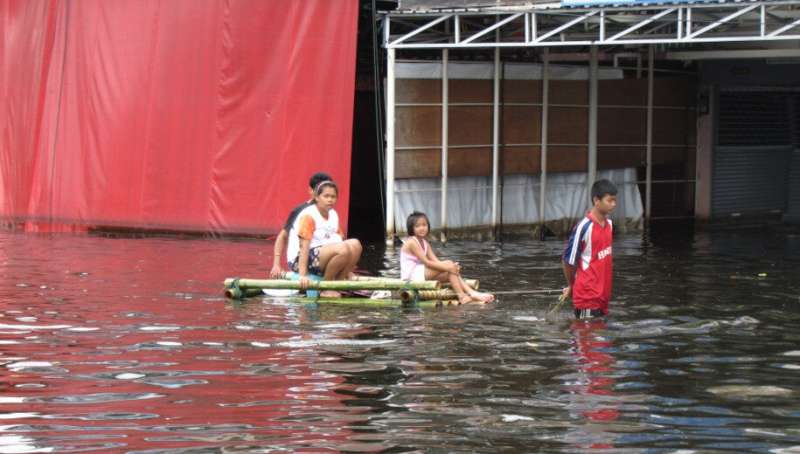
Rising sea levels and climate change are posing serious threats to the population and economy of several Asian coastal cities—Bangkok, Dhaka, Jakarta, Manila and Shanghai, among them.
Threats come from a combination of tropical cyclones, storm surges, high tides and sea-level rise that increase risk of serious flooding by 2030. Some 600 million people worldwide—the majority in Asia—will be affected by rising sea levels in flood-prone coastal regions, some of them economic centers.
Vietnam is in a class by itself with a high coastal plain population. By 2040, it is expected to experience a relatively high land loss due to submergence forcing people to migrate.
Jakarta reportedly holds the record for the world’s fastest sinking city, at a rate of around 25.4cm (1 inch) per year. Around 40% of the city now lies below current sea levels. Over half of its 10.6 million people lack access to piped water and surface water is heavily polluted, so they dig illegal wells to extract groundwater. Rains are not enough to replenish water in the soils because over 97% of Jakarta is covered in asphalt and concrete. The Indonesian government announced that they are planning to develop a new capital at an estimated cost of US$33 billion. The new city will relocate some 1.5 million people mostly civil servants and their families and economic actors. However, it seems that there is no commitment on the poor coastal folks in North Jakarta which will be left to deal with the unsolved land subsidence and rising seas.
Bangkok with its 9.6 million population is also vulnerable to rising sea levels. In 2015, its government published a report that said the city could be underwater in 15 years. The city, now only around 1.5 meters above sea level, is sinking at a rate of about 2cm (0.8 inches) per year. The city has about 700 buildings with 20 floors or more, and 4,000 buildings with 8—20 floors, putting considerable pressure on the land on which they sit.
Manila with its core city population of 13.3 million people is sinking at around 10cm (4 inches) per year. Since the city has an average elevation of around five meters (16 feet) it is living on borrowed time. The sinking increases the risk of floods and cause high tides to penetrate further inland and water to recede more slowly. Unless there is intervention, much of the land area bordering Greater Manila Bay—Pasay to Manila to Malabon to most of Bulacan province north of Manila—will go under several centimetres of water by 2050.
Bangladesh’s capital city of Dhaka, population 18.9 million, is another low-lying, riverside city in Asia beset by sinking caused by unsustainable groundwater extraction. The city is sinking at a rate of about 1.4 cm (0.6 inches) per year, with most urbanized areas a mere 6–8 meters above sea level. Sea level rise appears to be happening at a rate ten times greater than the global average in the Bay of Bengal, southwest of the city.
Certainly, a managed retreat should be inclusive for all, especially the most vulnerable and impoverished.